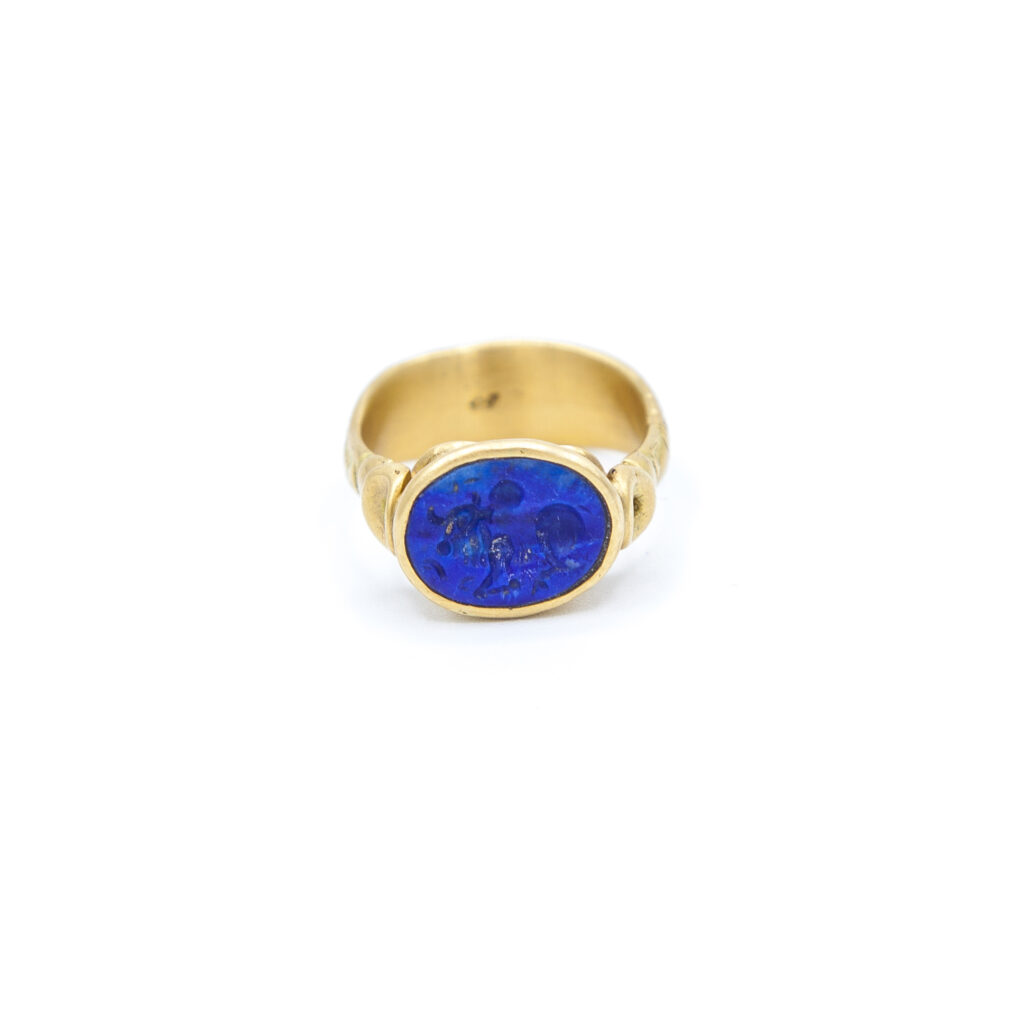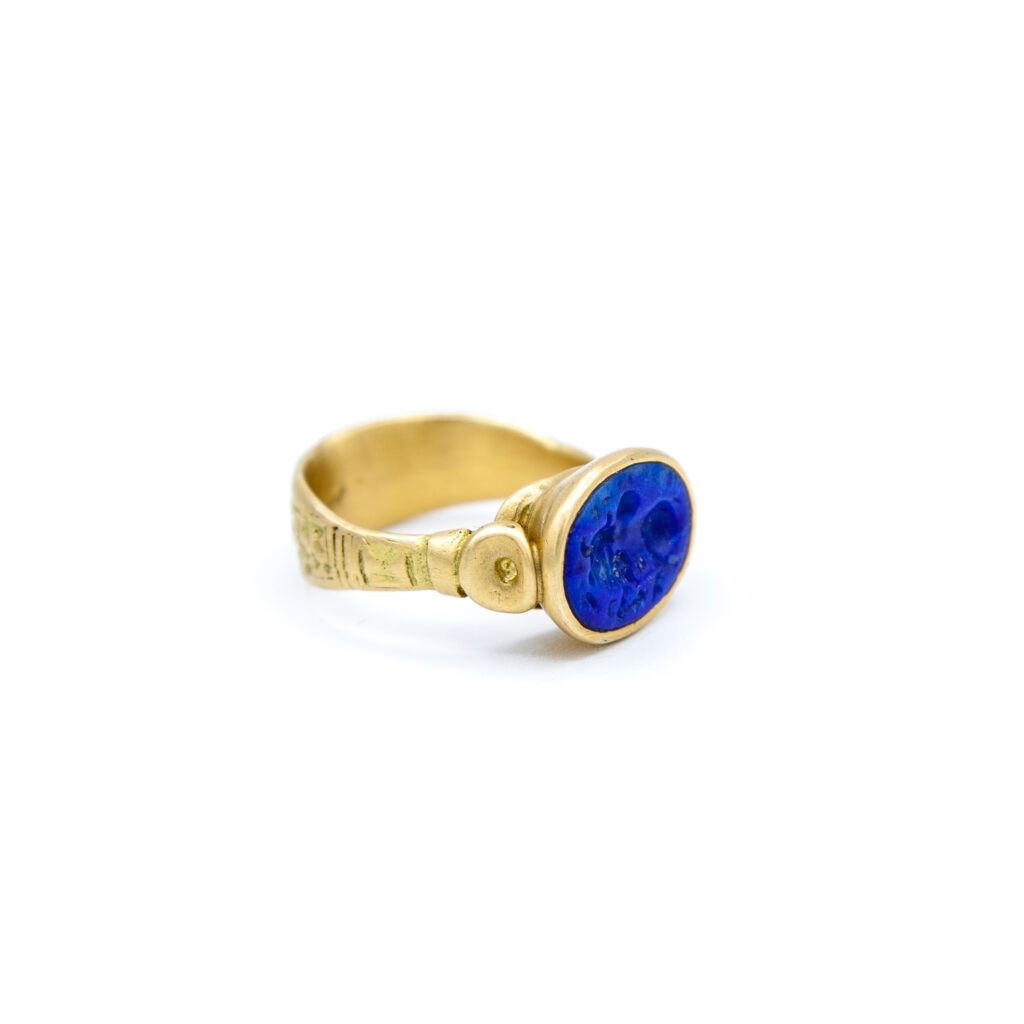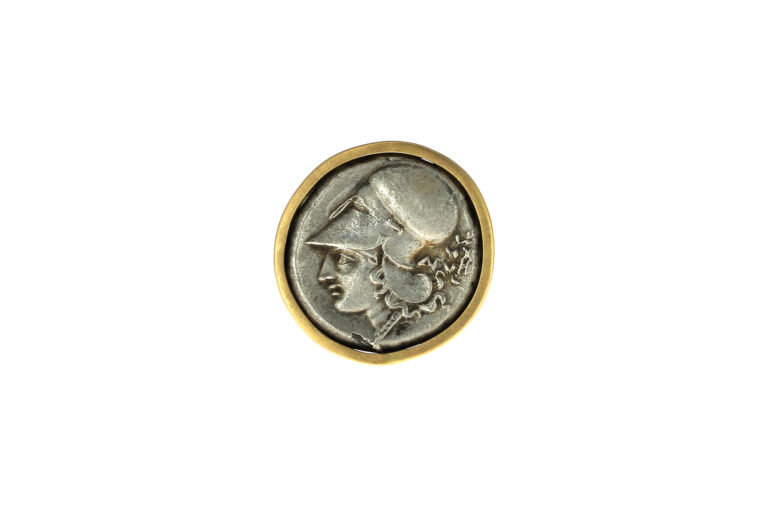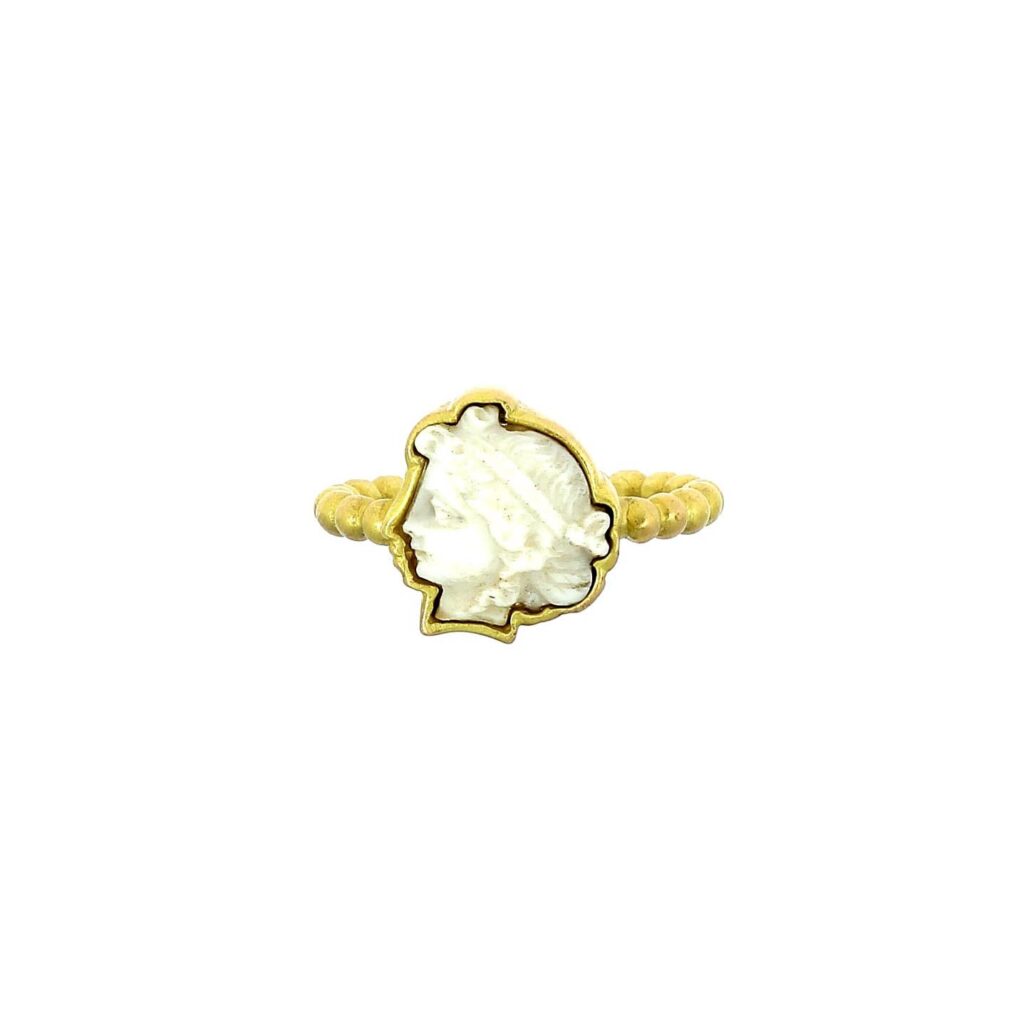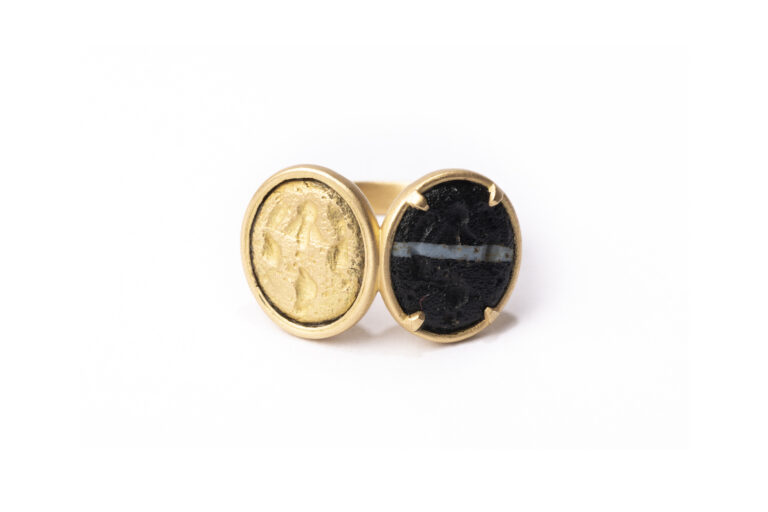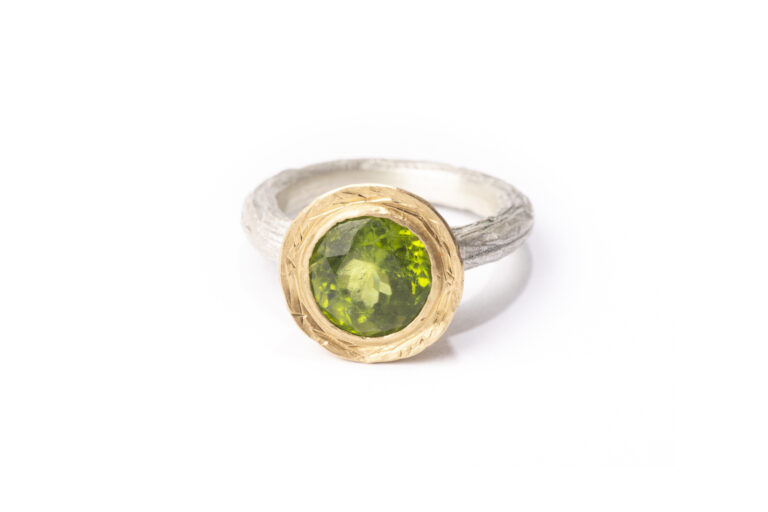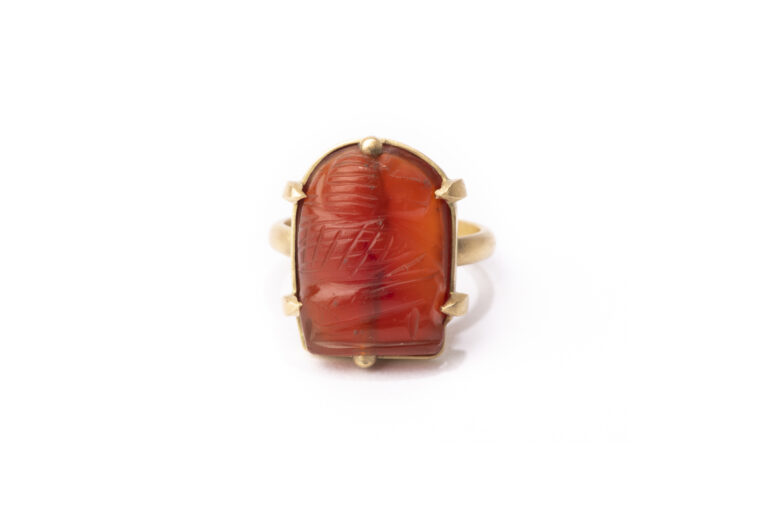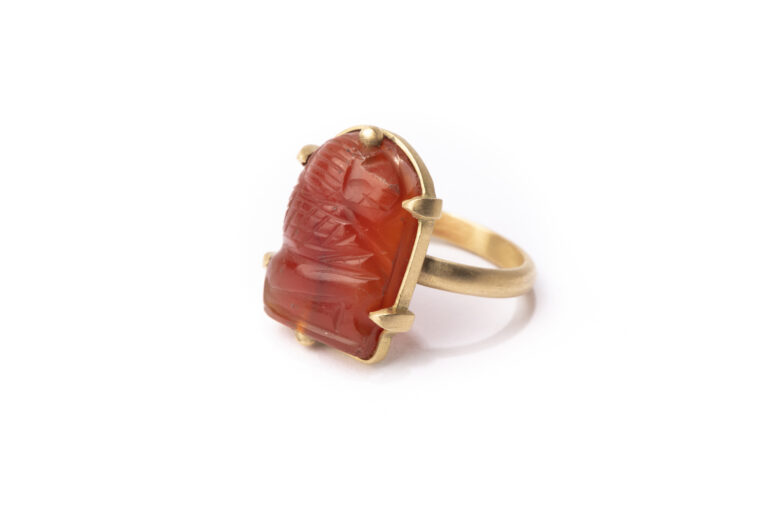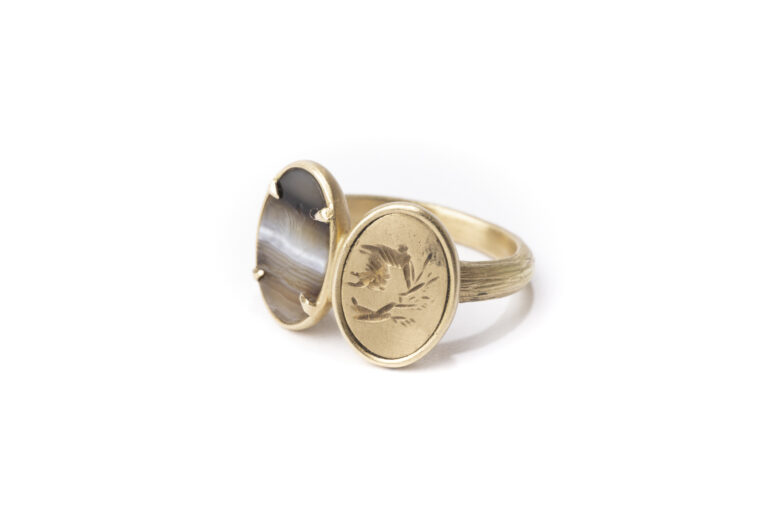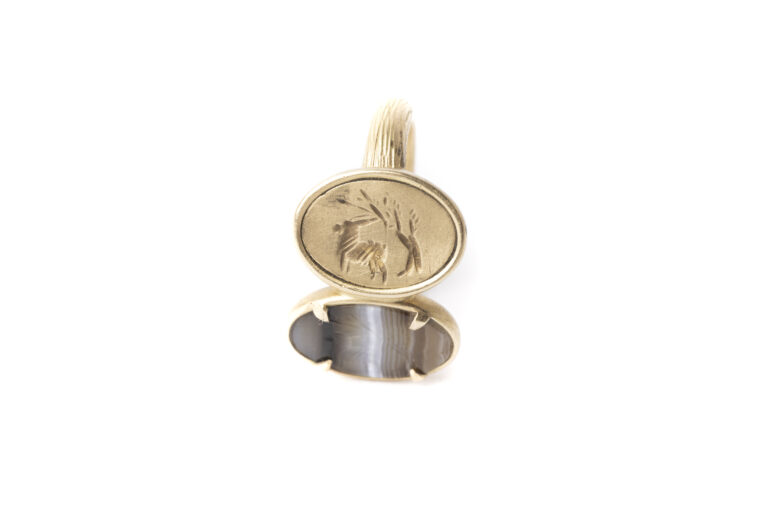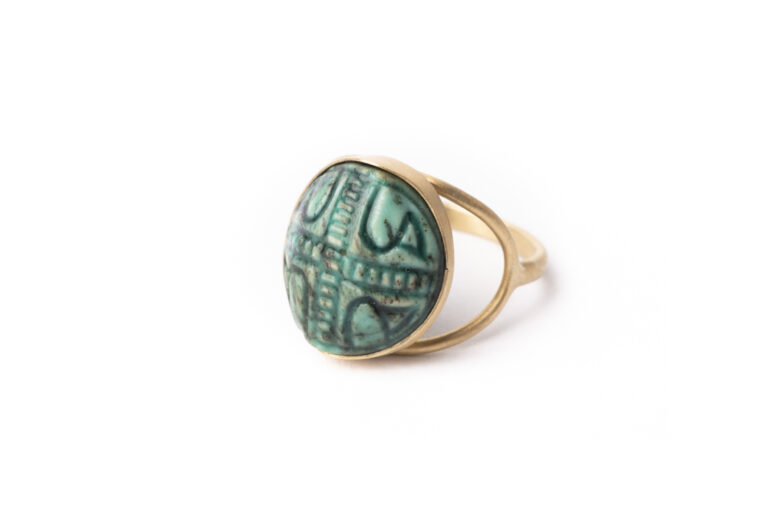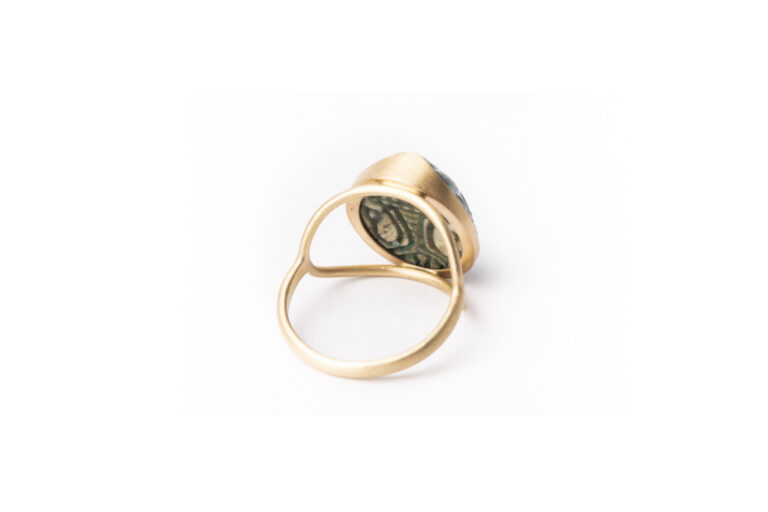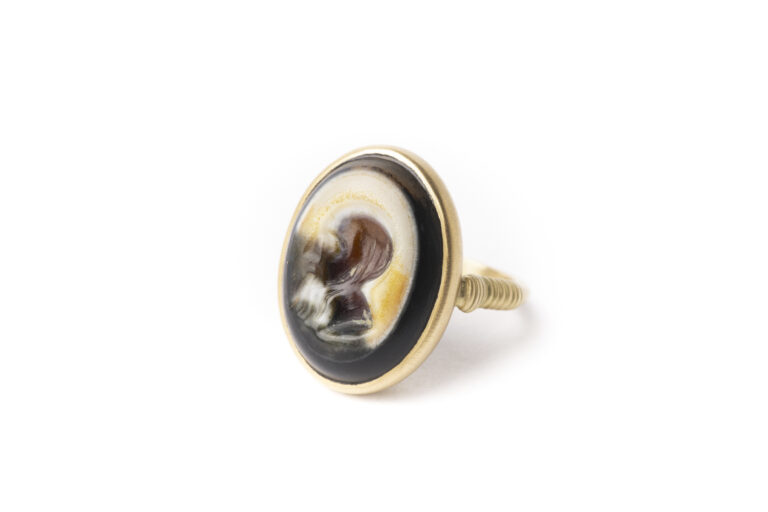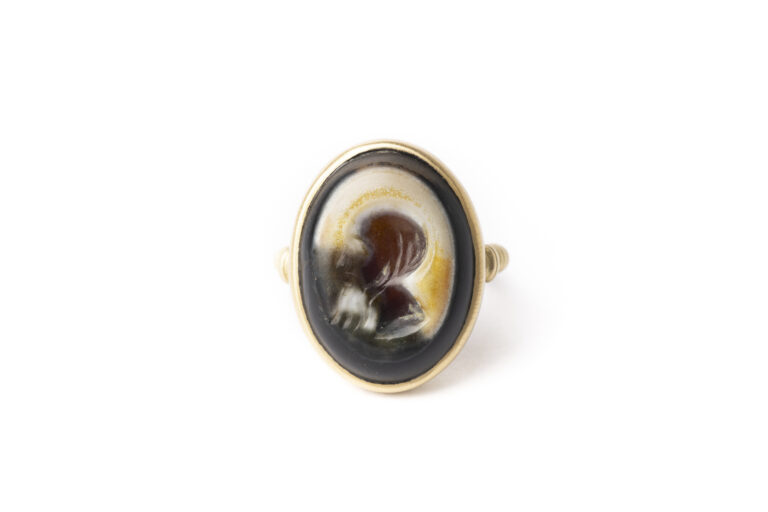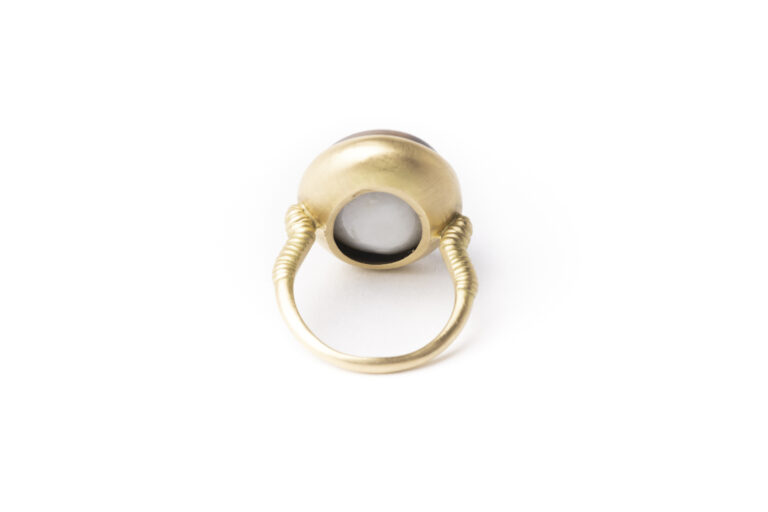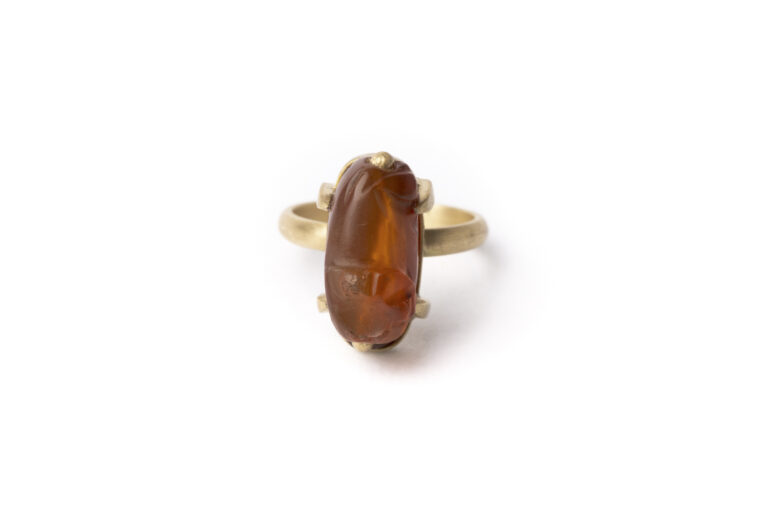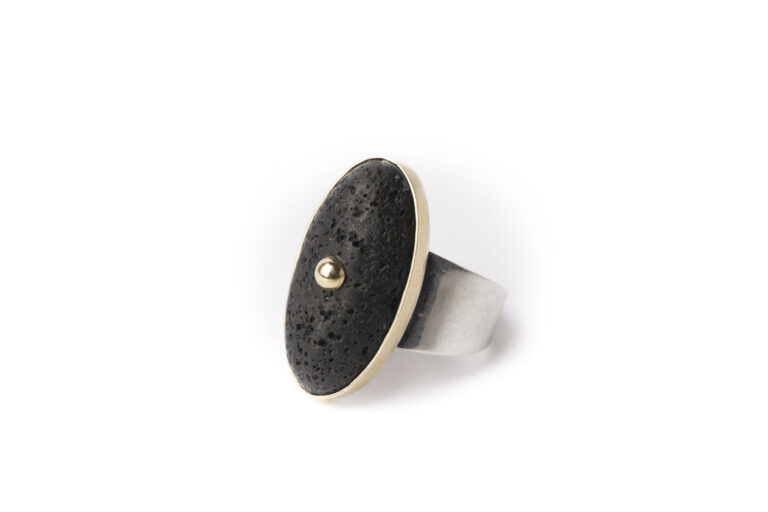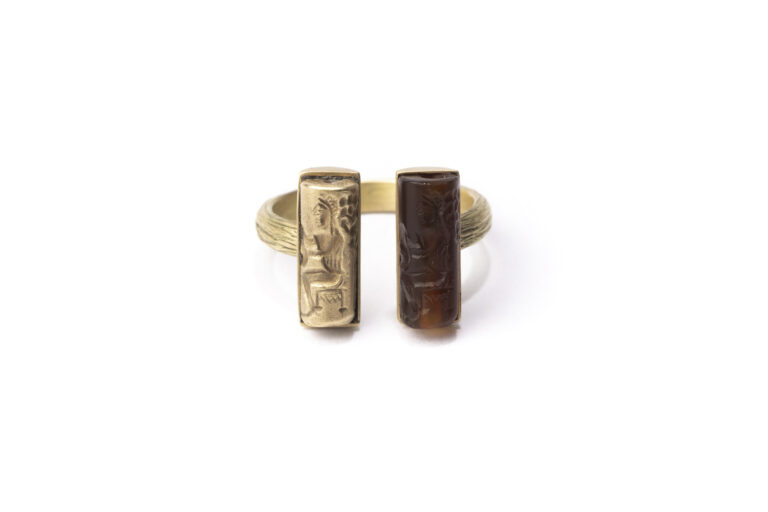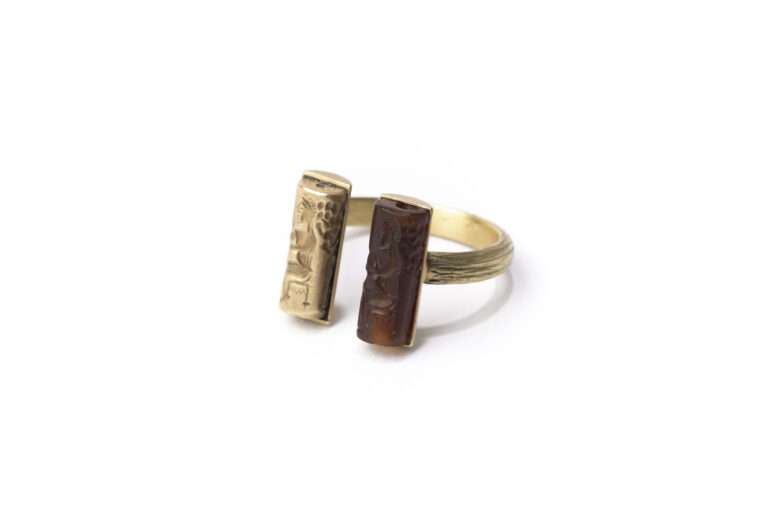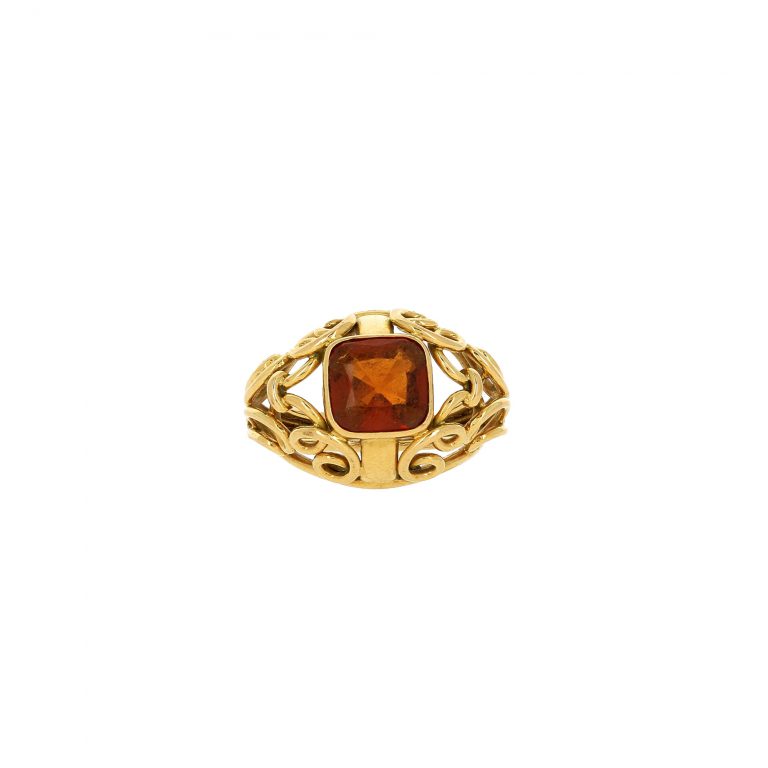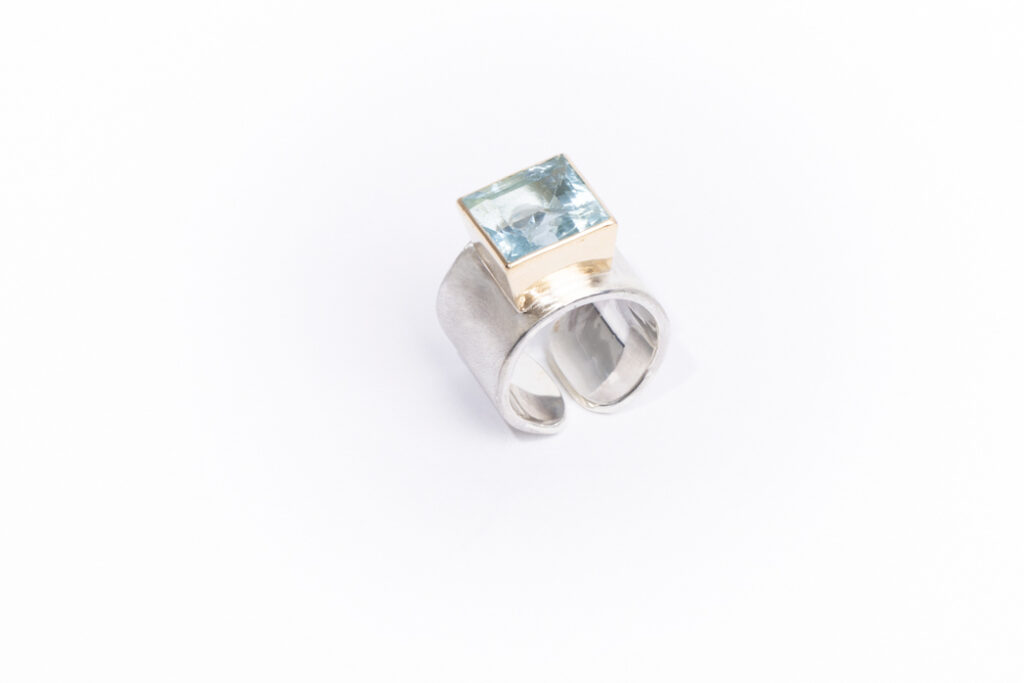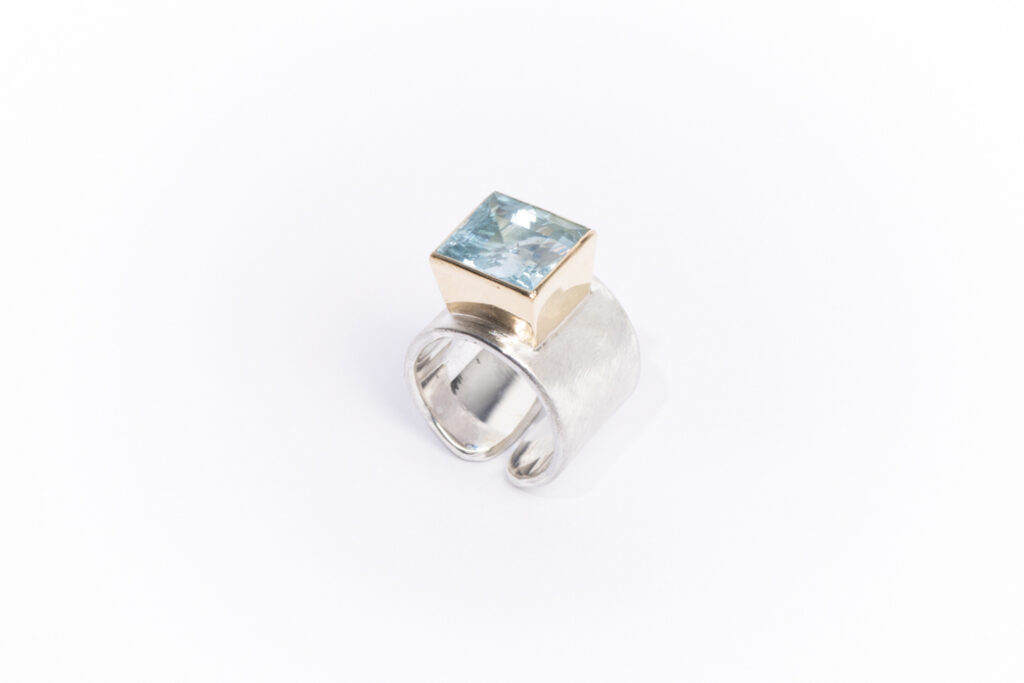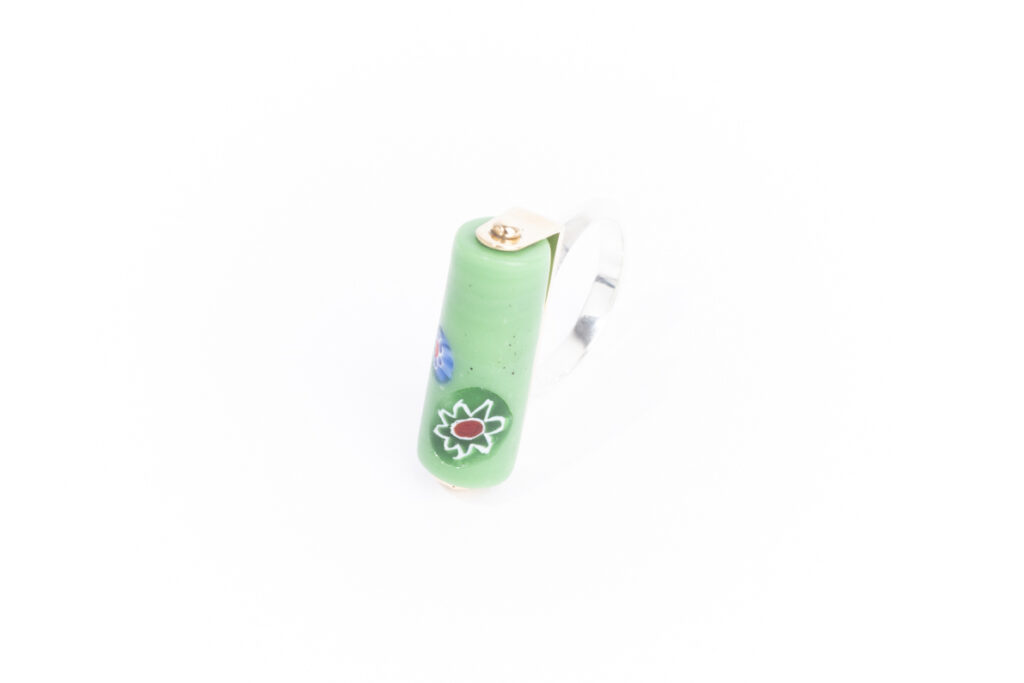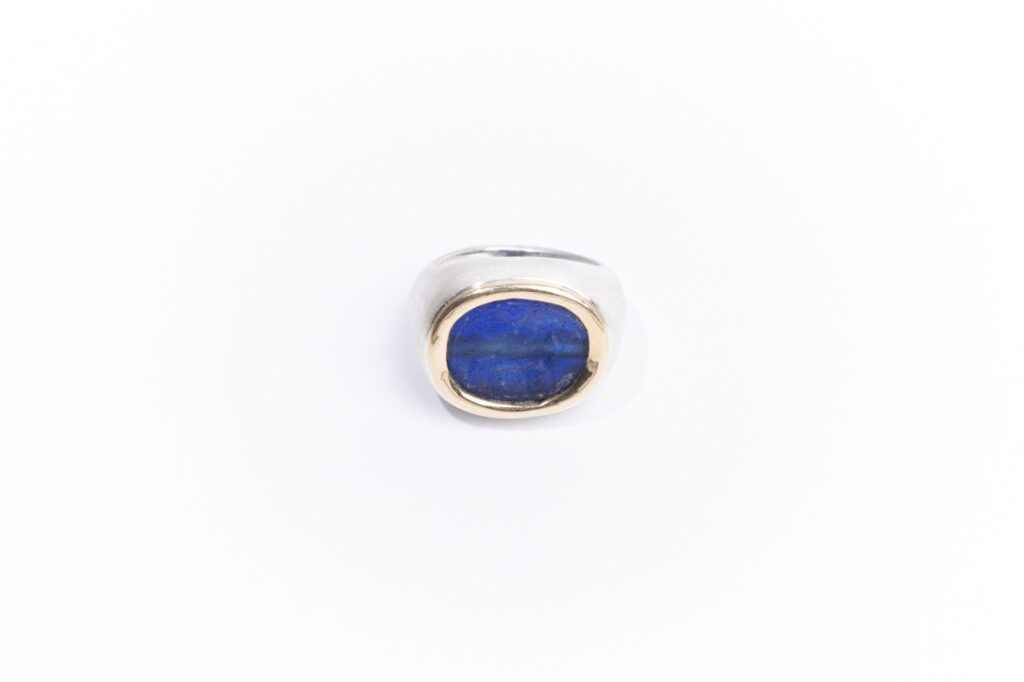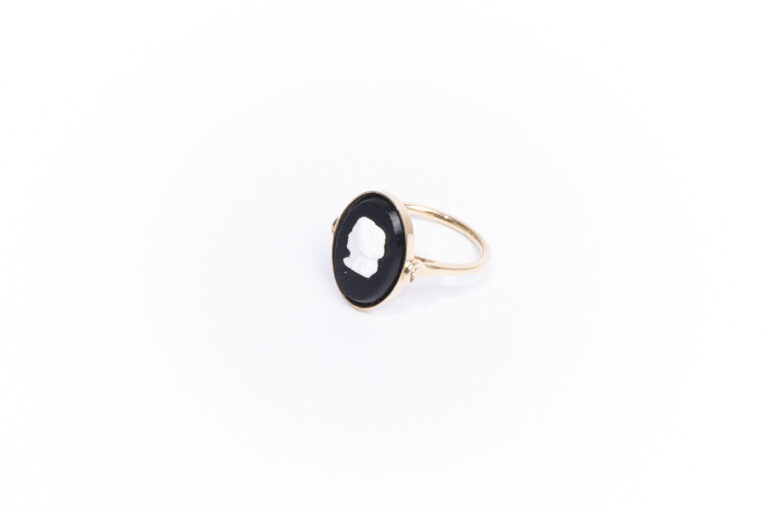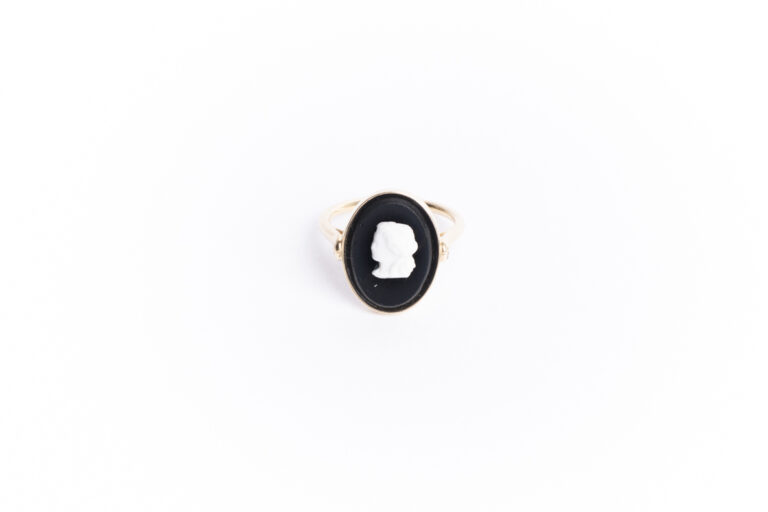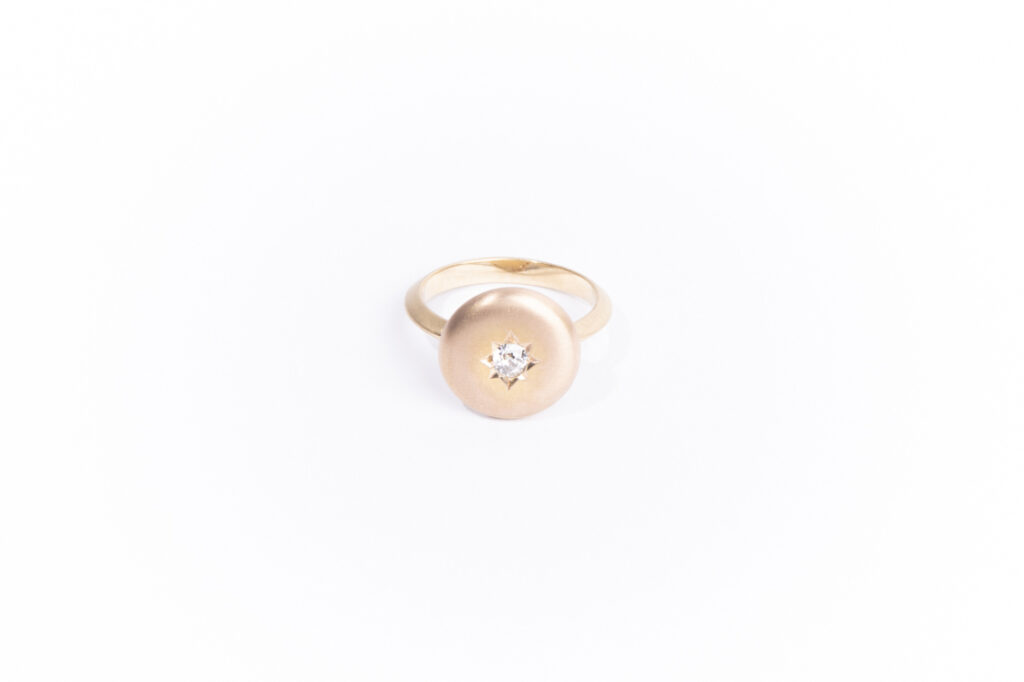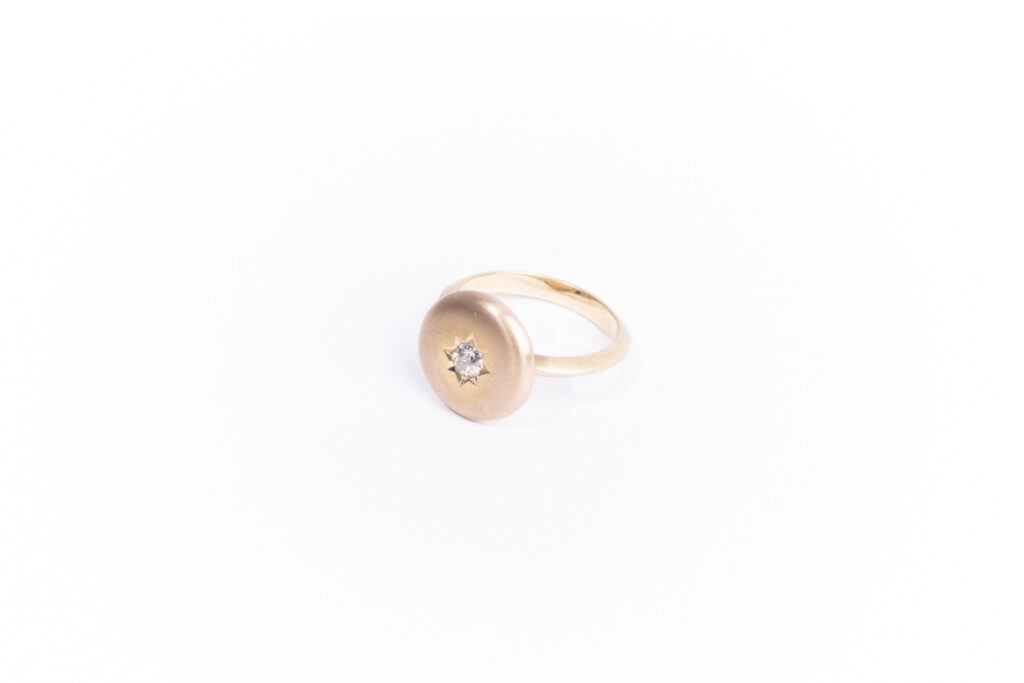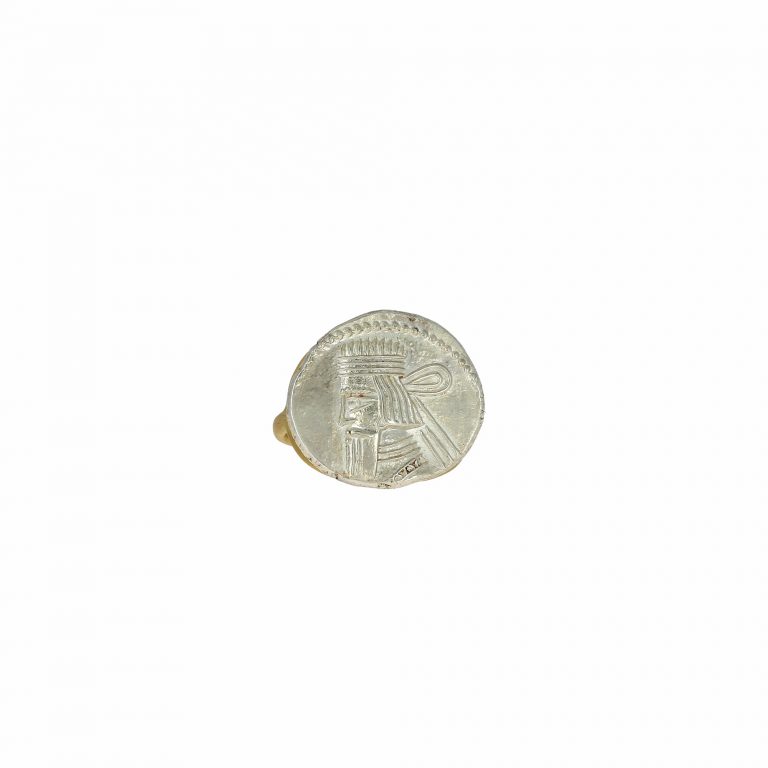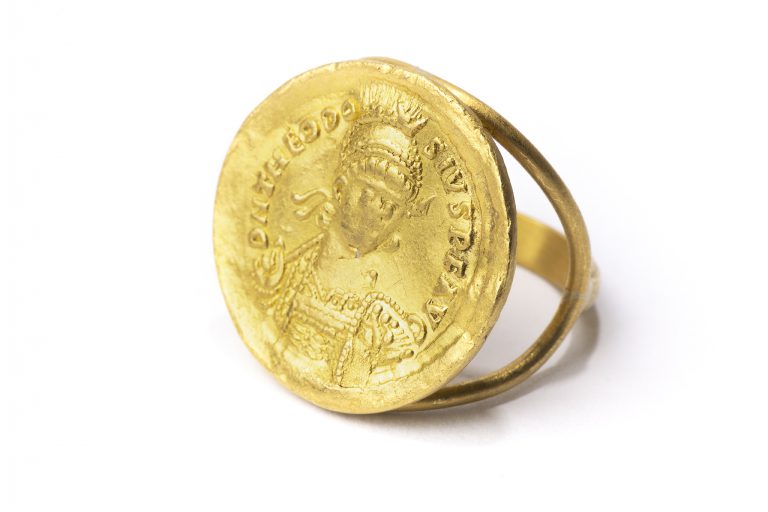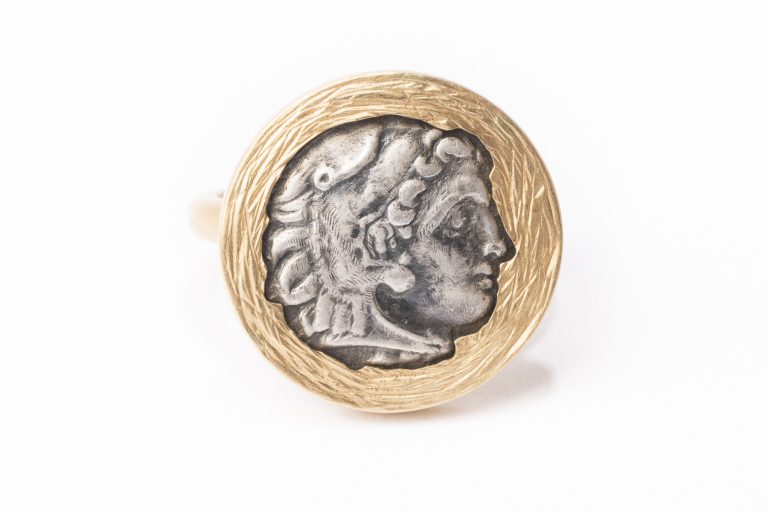
Designer of antique, archaeological and contemporary rings
Roma
Coin depicting the face of a helmeted Roma on the obverse, silver and set in 18K gold.
The Phrygian helmet is adorned with a griffin’s head symbolising victorious Rome.
The X on the left is a value mark signifying that one denarius is worth 10 aces, or 10 copper coins. This denarius was almost exclusively minted in Italy between 215 and 140 BC, when new types of representation came to compete with it.
Roma, -215-140 BC
Carnelian monkey
Carnelian stone representing Thot.
Set in 18K gold claws.
Thoth is the son of Horus and Set. The birth of the moon is linked to the appearance of the Eye of Horus and the birth of the God Thoth.
He plays the role of arbiter between the gods, protects Iris during her pregnancy and heals her son Horus.
He is represented as a baboon or ibis.
Egypt, New Kingdom to Roman period, 1580 to 30 BC
Green water beetle
Green lapis lazulli.
Set in 18K gold.
The word scarab, Kheper, is used to write the verb “to become” and to name the king’s coronation. The beetle is thus symbolic of the daily birth of the sun. A protector of the living, it is a symbol of rebirth for the dead.
Egypt, New Empire to Ptolemy, 1580-367 BC
Senet ring
Ring consisting of a dice from the Senet game, in the shape of a cylinder, made of lapis lazuli.
Senet, which can be compared to our game of goose, had a board with thirty squares. It was highly prized by the aristocracy, and is often depicted in frescoes showing a pharaoh, queen or nobleman playing with a god to symbolise his passage into the afterlife and his right to enter the kingdom of Osiris.
Egypt, New Kingdom to Roman period, 1550 to 30 BC
Precious cameo
Cameo representing a woman’s profile. Mounted in 18k gold. The cameo, like the intaglio, refers to the art of glyptics. Unlike intaglios, which are engraved in relief, cameos are worked in relief.
It takes its name from the Italian “cameo”, certainly in reference to the cameo of coloured layers in the stones used.
Its heyday was during the reign of the emperor Augustus, in the 1st century AD.
Alexander the Great
Ring consisting of a tetradrachm of Alexander the Great bearing the horn of the god Ammon, on the reverse Athena, goddess of war and wisdom. Mounted in 18K gold
Alexander was born in 356 BC, the son of Philip II, King of Macedonia, who was assassinated in 336. At the age of 20, Alexander embarked on a series of conquests, penetrating the Asian continent as far as the Indus, conquering Anatolia, Lebanon, Egypt and Persia, and founding numerous cities.
This epic came to an abrupt end in Babylon: Alexander, who was suffering from a high fever, died in 323 without an heir.
Thrace, 306 to 282 BC
Creation of unique and exclusive jewellery, entirely hand-mounted and resolutely contemporary. I work with amulets, coins and intaglios from ancient civilisations such as Greece, Babylon, Egypt, Rome and Mesopotamia. Each piece is appraised, its integrity respected – no glue, no drilling – and transformed into a luxury jewel.
